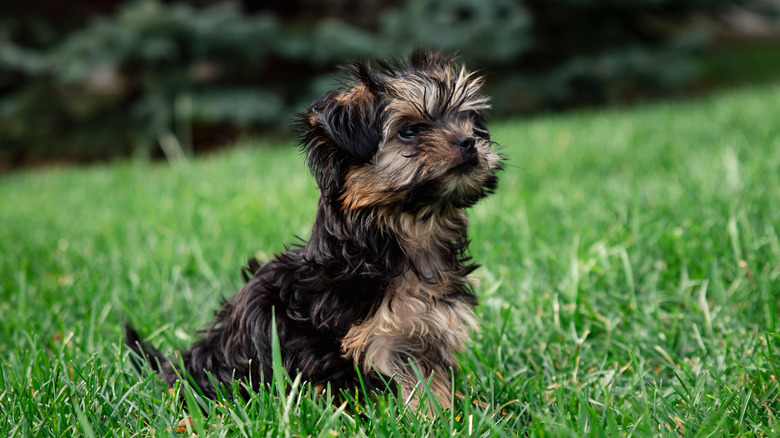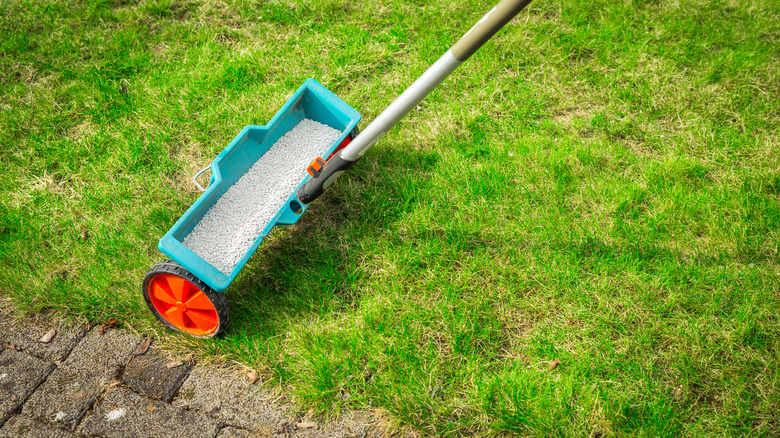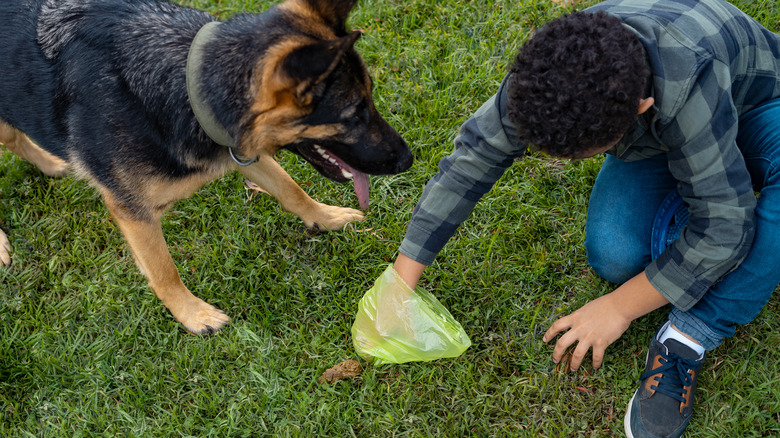Why You Might Want To Fertilize Your Lawn Less If You Have Dogs
Determining how often you need to fertilize your lawn can be a bit of a challenge. You certainly don't want to over-fertilize your lawn, which can lead to brown patches and thinned-out grass plants. A standard fertilization program typically calls for four applications per year. However, there may be reasons to use these products less often. One such situation may occur when you have dogs in the yard.
Dog waste contains some of the same nutrients as the bags of fertilizer you'd purchase at the hardware store, which means you may be able to allow the dog waste to provide some of the nutrients required. You would simply adjust your weed and feed applications, saving you money and time. When dogs are present, consider cutting back on the number of feedings for your lawn. If you choose to let the dog waste handle some of the nitrogen application, you then could cut back to a couple of applications of weed and feed each year.
Now, this doesn't mean that you can just leave the solid dog waste on the lawn and never pick it up to dispose of it. Dog poop has extremely high nitrogen content, so leaving it in place would cause brown spots on the grass as the high concentration of nitrogen releases into the soil. Because the feces take up to a year to decompose, removing all the waste regularly allows some nitrogen to go into the soil, but not too much.
Determining how often to add fertilizer to your grass with dogs around
If you want to avoid over-fertilizing the lawn by adding weed and feed products to a yard that already has dog poop and urine, it's important to think about the type of grass that's planted in the lawn.
With cool-season grass, you typically can fertilize two to four times per year. When dogs are constantly adding nitrogen to the yard, though, consider cutting back to two applications per year with your cool-season grass in the early spring and early autumn. Some of the most common cool-season strains are ryegrass, Kentucky bluegrass, and tall fescue. These grow best in temperatures between 60 and 75 degrees Fahrenheit, so they tend to show the most activity in the spring and fall. They often appear in areas across the upper three-quarters of the continental United States, although they're especially common in the upper half.
With warm-season grasses, the schedule for fertilizing can run more than four times per year, because they need more nutrients during the summer season to allow them to thrive. Should you have a dog adding nitrogen-rich feces and urine to the yard, though, you could potentially cut back to two feedings per year in the early spring and late summer. The most common warm-season grasses include Bahia, Bermuda, St. Augustine, and Zoysia. They grow most frequently in the lower half of the continental United States, although they are especially common in the lower one-quarter of the country.
Other options for fertilizing a yard if you have dogs
Perhaps the biggest challenge with trying to fertilize a lawn when you have dogs is trying to figure out how much nitrogen the dog waste is adding. Unfortunately, taking soil samples regularly is the only option for accurate measurements. However, as an added challenge, it's difficult to take accurate samples if your dogs defecate and urinate in the same space in the yard regularly. You have a couple of options to try to deal with the uncertainty of how much nitrogen the animals are adding to the soil.
The easiest option is to attempt to negate the effects of all dog waste immediately, meaning as little nitrogen as possible leaches into the soil. You then could follow your normal fertilizer product schedule of about four times per year for the grass. This may mean picking up the feces every day or two, especially if you have multiple dogs. Don't forget that dog urine also contains high levels of nitrogen. You should use the garden hose to spray any areas where the animal urinates as quickly as possible. If you use a sprinkler daily, this can be a big help in diluting the urine, too.
Another option is to use a low-nitrogen fertilizer on the yard twice a year and a regular product twice a year. If you want to combat weeds, for example, you don't want to skip a chance to add a herbicide with a weed and feed application.


